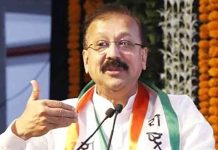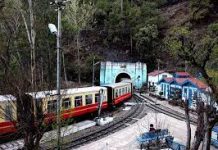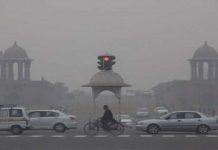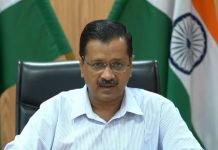By Vivek Gupta
This year, India hosted the 12th World Hindi Sammelan in Fiji. As arbitrary as it might seem, Fiji was not a random choice off the face of the earth. The history of Indians in Fiji, and the evolution of Hindi into the local dialect called “Fiji Baat” make Fiji an interesting choice for hosting the Global Hindi Conference 2023.
After the abolition of slavery in 1834, the demand for Indian indentured labourers increased immensely, and they started being taken to plantation colonies abroad producing high value crops like sugar. Initiated by Fiji’s first Governor Sir Arthur Gordon, the introduction of Indian indentured labour back in the early 1800s marks an important chapter in the development of the island nation. Over a 37 years period from 1879 to 1916, about 87 ship loads carried over 60538 labourers from the Indian subcontinent to the Fiji islands to work on the plantations there. This vastly increased the economic viability of the Fiji plantations and enabled colonial administration to minimize Fijian alienation from the land, forever changing the socio-political landscape of the then young colony.
The Nukulau island, about 10kms from the capital Suva, was used as a quarantine port from where labourers where then deployed to their respective employers across the island chain, including but not limited to Colonial Sugar Refinery Company [CSR], Stanlake Lee, and the likes.
The tens of thousands of Indians taken to Fiji by British colonialists to be sugar cane workers then continued to stay on the islands at the end of their unpaid contracts, thereby marking the beginning of an Indian hub across the South Pacific. Eventually, in consonance with the advancement of all civilizations, in 1912, Dr. Manilal became the leading voice of freedom of the indentured labourers and was instrumental in the foundation of the Indian Imperial Association. In 1920, a strike resulting in several people being injured saw the emergence of Sandhya as another prominent figure amongst the emigrants. Such eminent representatives of the Indian indentured labourers from the 1900s Fiji islands reported back to the Indian government on the condition of Indians in the Colony of Fiji and finally, indentured labour was abolished in 1920.
The Indian emigrants remained primarily on the two main islands of Viti Levu and Vanua Levu. By the 1940s, Indo-Fijians made up the majority of the population, outnumbering indigenous Fijians. Indo-Fijians, defined as anyone who has Girmit ancestry, make up 38 per cent of Fiji’s 910,000 people but own less than 2 per cent of the land. The Girmit Remembrance Day on May 14 marks the day the first ship carrying Indian workers arrived in Fiji.
The total population of Indians in Fiji is 315,198, almost 40% of the total population of Fiji. The population of Fiji is spread across numerous islands, and much of the population does not travel between them. About 85 per cent of the Pacific island nation belongs to indigenous landowning units, administered through the government’s Native Land Trust Board, now known as the iTaukei Land Trust Board. The remainder is either freehold or government-owned land. Indo-Fijians can access land through 20-30 year agricultural leases and 50-99 year residential leases. Mahendra Chaudhary was Fiji’s first, and till-date the only, Indo-Fijian prime minister from 1999-2000, and later became the finance minister from 2007 to 2008. In fact, India today happens to be one of the few countries whose citizens do not need to apply for a visa in advance. They can get a Fiji visa upon arrival in Fiji provided they have the valid travel documents, and the visa application is done when their flight lands in Fiji.
The need to find a common language between Indians from north and south settled in Fiji and for the children being left in day-care centers then required a common language too. Hindustani (an omnibus term covering both Hindi and Urdu) emerged as the convenient language of communication for the new settlers on the Pacific chain of islands. Hindi is now an official language in Fiji. In the 1997 Constitution, it was referred to as “Hindustani”, but in the 2013 Constitution of Fiji, it is simply called “Hindi”. Fiji Hindi, also known as Fiji Hindustani or Fijian Hindi, is a language which is spoken in Fiji by most Fijian citizens of Indian descent. It is derived mainly from the Awadhi and Bhojpuri language or dialects of Hindi and also contains words from a few other Indian languages. The first language of Fiji is actually a mix of Fijian and some English words along with the Hindi words spoken there gradually diverged significantly from the dialects of Hindi and Urdu spoken in India. This remixed language of communication popularly came to be known as “Fiji Baat”.
A Timeline:
1879 – 1916: 60553 Indians registered including labourers and any dependents such as children – Girmit status for 5 years
1917 – Education is provided for Indians
1919 – Political rights for Indians in Fiji considered
1920 – Indenture system abolished first day of the year
1929 – 3 representatives were elected into the Legislative council under the communal franchise
1997 – Hindi included as official language but referred to as “Hindusthani” in the Constitution
1999 – First, and till date the only, Indian elected as PM in Fiji
2013 – Constitution of Fiji uses the word “Hindi”












